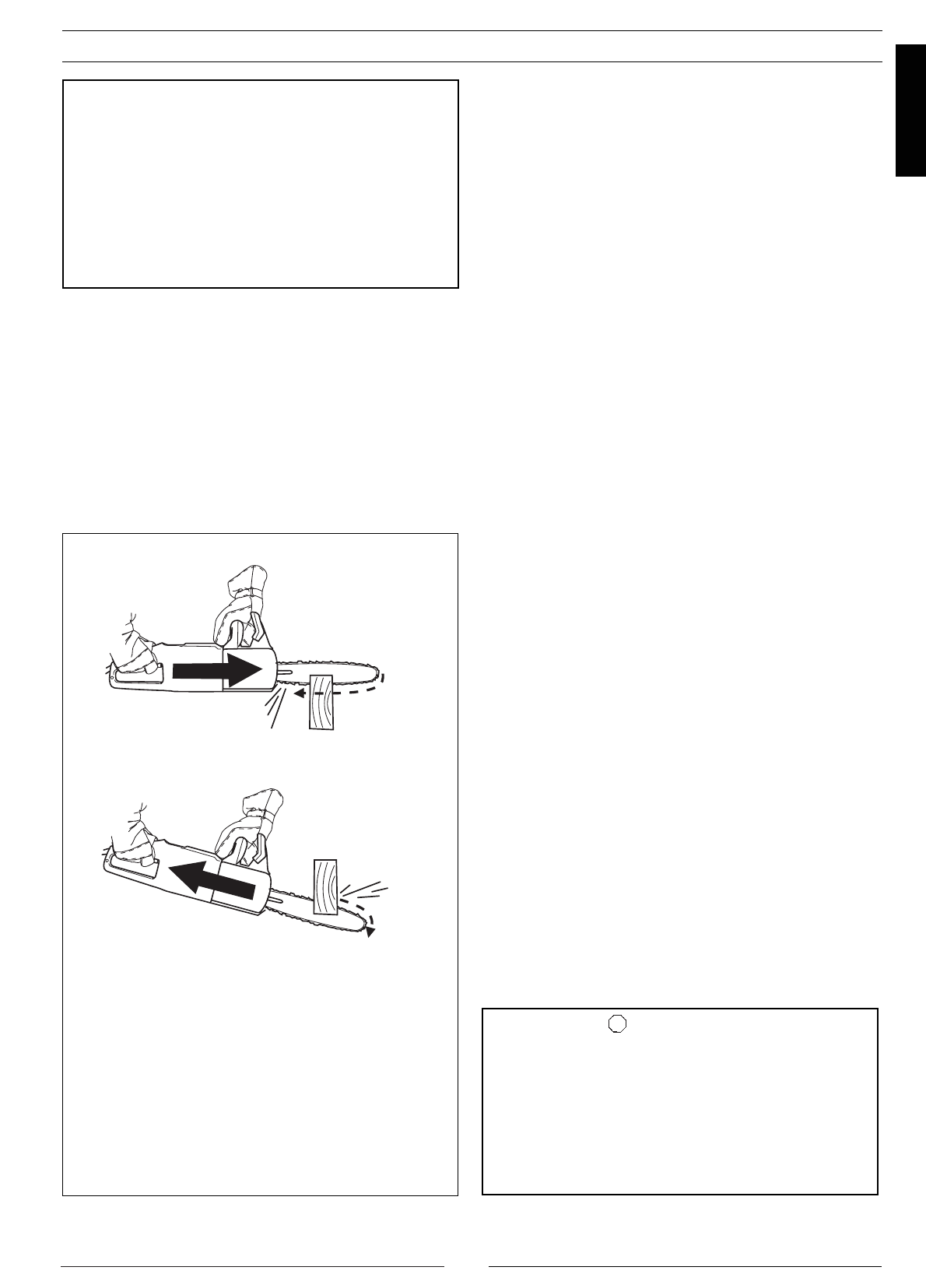
25
ENGLISH
Basic Working Techniques
2. Avoid stumbling on obstacles, such as stumps, roots,
rocks, branches and fallen trees.
3. Watch out for holes and ditches.
4. Be extremely cautious when working on slopes or
uneven ground.
5. Turn saw off before moving from one place to
another.
6. If you are not copmletely sure a cutting situation is
safe, or you require assistence, get help before
continuing.
Reactive Forces
When you are cutting, the chain in the kerf forces your
saw in a direction opposite to the chain movement.
This is called a reactive force. One such reactive force
previously covered is kickback. With any chain saw,
the energy used to cut wood can be reversed and work
against the operator. If a rotating chain suddenly jams
or hits a solid object, reactive forces occur instantly
and may make you lose control of the saw.
1. Be especially alert during limbing operations when it
is easier to jam the chain or touch a limb by
mistake.
2. Keep your feet firmly planted in a wide, balanced
stance.
3. Keep the saw body close to your body to improve
control and to reduce strain.
4. When cutting with the bottom chain, the reactive force
will pull the saw away from you towards the wood you
are cutting. The saw will control the feeding speed
and sawdust will be thrown back at you.
5. When cutting with the top chain, the reactive force
will push the saw towards you and away fron the
wood you are cutting.
6. Cut with the bottom chain as much as possible.
WARNING!
If you are cutting with a pushing chain and allow the
saw to be pushed back far enough to engage the tip of
the bar, a kickback may occur. See page 17.
Be especially cautious regarding nearby objects when
cutting with a pushing chain or «under up».
The kickback zone will move INTO such objects during
«under up» cutting, increasing the possibility of kickback.
STOP
IMPORTANT!
This information does not cover every specific situation.
Circumstances may vary depending on the terrain,
vegetation, type of wood, form and size of trees, etc.
Consult your service dealer, foresty agent or local
foresty schools for advice on specific woodcutting
problems in your area.
This will make you more efficient and your work safer.
General rules.
1. Avoid cutting under adverse weather conditions, such
as dense fog, heavy rain, bitter cold, high winds, etc.
Adverse weather is often tiring to work in and creates
potentially dangerous conditions such as slippery
ground. High winds may force a tree to fall in an
unexpected direction causing property damage or
personal injury.
PUSHING
CHAIN
PULLING
CHAIN
REACTIVE FORCES


















